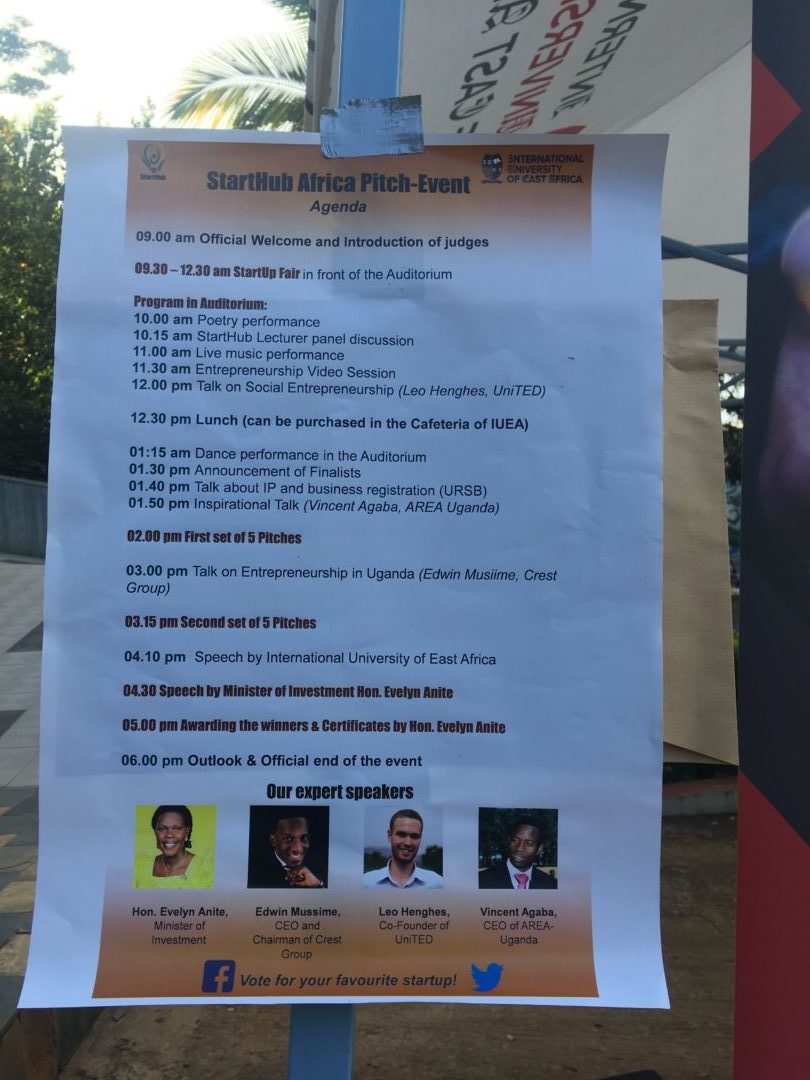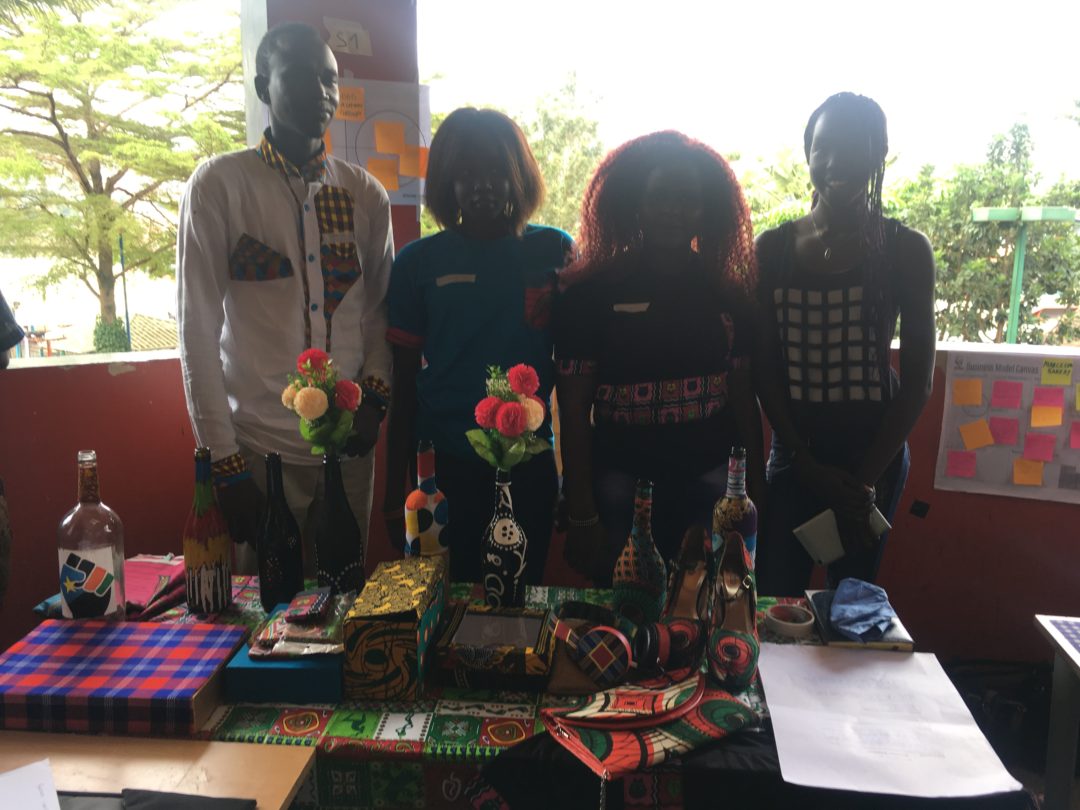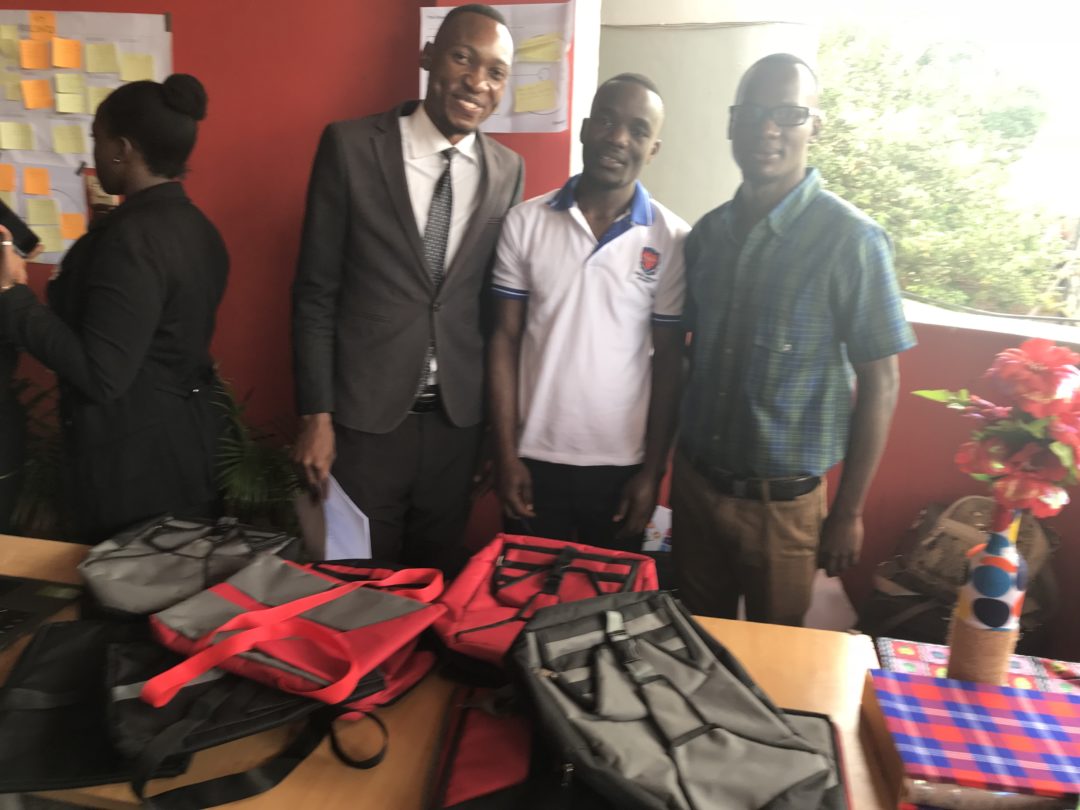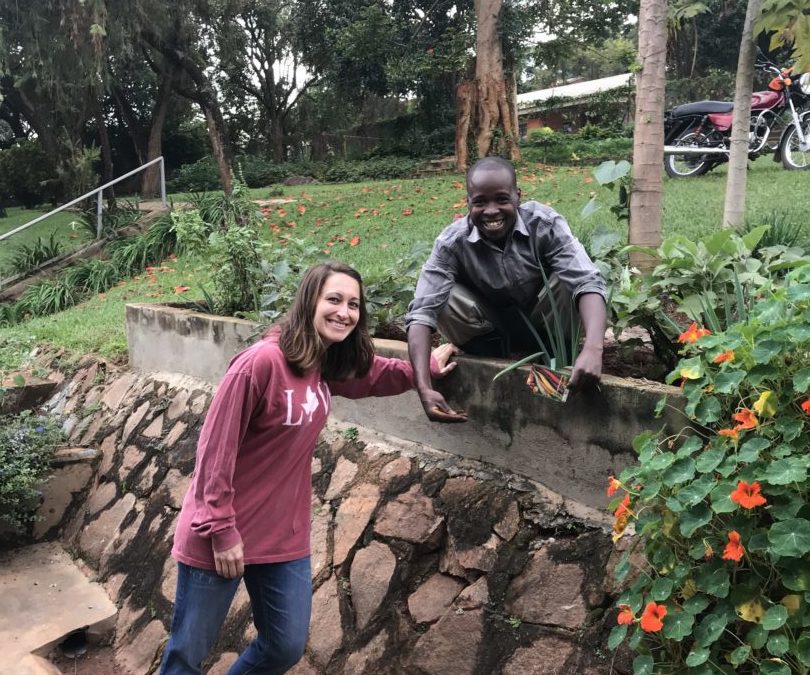
by Jessica Tetirick | Jun 16, 2018 | SAMS Missionaries, SAMS-USA, Uganda
While I haven’t been able to meet with students yet to review business plans, our gardener, Paul, is a jack of many trades and took me up enthusiastically on my offer to put his business plans into spreadsheet form to help him make decisions about how best to grow them, etc. He is currently selling beans and also has plans to open a piggery. We spent a few days the other week discussing the inputs to the model for these businesses, building the models and reviewing them together. It was a fun experience to learn about new industries I had NO previous exposure to and to see Paul giggle at what seemed like silly questions I was asking – like “does 1 pig eat a kilo of feed each week or each day? – A week? No, a day!” “How much does a piglet cost?”
Seeing the excitement on his face as he took printouts of the different financial models we built with him to discuss with his brother and father in his village the next weekend made my week. It reminded me that God’s economy doesn’t work like our human economy. Blessing one person is just as important and valuable as blessing a multitude because our God is a personal God who loves each of us individually out of his glorious riches. I’m excited and hopeful to see where Paul’s business plans take him!

by Madeleine Ruch | Jun 6, 2018 | Brazil, SAMS Missionaries
I have been here in Recife for 2.5 weeks already and I’m LOVING it! I am grateful that Brazilians are so warm–everyone I’ve met is extremely welcoming which has made settling in easier.
Every day I go to Casa da Esperança, the day care center where I’m working. I love Casa and am so impressed with the organization as a whole. Every day, up to 60 kids come for the whole day–7:30 am-4:30 pm and are bathed, fed 5 meals, and then do different educational activities. When they’re at Casa, the kids are safe from getting dragged into the drug industry and it enables their parents to work consistently. The children are absolutely precious. It’s been special to begin developing relationships with them. I’m mostly with the 2 year olds, and when I arrive they say, “Tia Mada! Tia Mada!!” and I get many hugs and kisses.
 I’ve been able to help out with English translation in the office at Casa–they want to develop English versions of a number of media documents and I’ve been able to help by editing Google Translations. Besides Casa, I’ve also had the opportunity to lead a worship song in Portuguese/English with a Brazilian girl on Sunday–it was at the small Anglican church that meets on the day center grounds to reach the surrounding community. The picture to the right is with members of the Casa da Esperança team after working a bazaar to raise money for the day care center!
I’ve been able to help out with English translation in the office at Casa–they want to develop English versions of a number of media documents and I’ve been able to help by editing Google Translations. Besides Casa, I’ve also had the opportunity to lead a worship song in Portuguese/English with a Brazilian girl on Sunday–it was at the small Anglican church that meets on the day center grounds to reach the surrounding community. The picture to the right is with members of the Casa da Esperança team after working a bazaar to raise money for the day care center!
Please pray for…
1: continued improvement in my facility with Portuguese–I can get around fine, I just want to keep improving
2: blessing for Casa in their current work, and provision for the improvements and expansions of their programs toward which they’re working
3: my precious host parents Xandau and Andrezza–that they would be blessed for the incredible generosity with which they are caring for me!
4: that each child that enters the day care center daily would be surrounded by the presence of Jesus and his love for them.
Thank you for your prayers, and the support that makes my time here possible! God is so good. Living and working here is an immensely beautiful gift.
Warmly,
Madeleine
P.S. Follow me on Instagram for more photos of what I’m doing! @madeleineruch

by Jessica Tetirick | May 21, 2018 | SAMS Missionaries, Uganda
As I mentioned in my previous blog post, some of our UCU students participated in the StartHub Africa program for the last semester. The culmination of the program was the final pitch event in Kampala at International University of East Africa.
Our day began at 6 am when we left UCU campus in a 14 person van (a taxi) to get to Kampala by 7:30. Our early departure time was to avoid the “jam” (or traffic) that is a fact of life here on the main roads. Dressed for success with their prototypes in hand, our students were excited for the final day to have arrived, each hopeful that they would be winners of some prize money to further their businesses.
We were the first university to arrive, allowing each of our 5 groups to have prime locations for their “booths” for the fair. Location, location, location! The agenda for the day is shown here… although we operated on African time so it was not exactly as planned!
After the judges had visited each of the approximately 35 groups during the fair, the judges announced the 11 finalists, 2 groups from each of 5 industries and 1 voter selected finalist. UCU brought 5 groups, and 3 of our 5 were finalists and were able to make their 5-minute pitch on stage to the judges and all in attendance and answer 3 minutes of questions afterwards. We were so proud of each of our students who put their all into their businesses and also of the groups who presented very well.
When final results were in, one of our groups won! The business is a mobile app called “MyCents” which is intended to keep track of simple bookkeeping targeted at mini-business owners up to small business owners. The interface is user friendly for non-financial managers or owners and then has graphical depictions of sales, expenses, etc. There are many mini-businesses in Uganda, people selling chapati (similar to a pancake) on the side of the road, small retail storefronts selling food or bags, and others. Often people go out of business due to poor cash flow management. This group’s solution to that problem was to provide a way to easily monitor the progress of the business in order to make better strategic decisions. In an environment where personal computers may not be accessible to everyone but mobile phones are very common, this mobile app could have a great opportunity to make an impact. It will be exciting to see how far they can take their business!
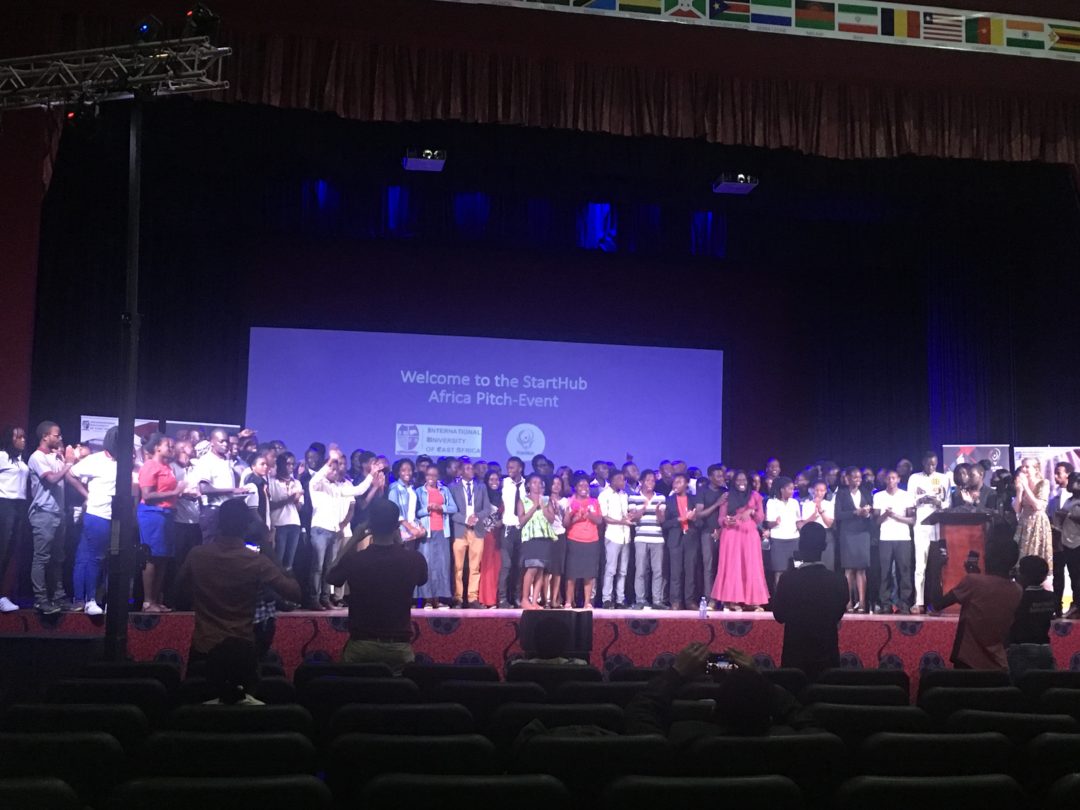

by Roger and Joanne Griffin | May 18, 2018 | Latin America, Mexico, SAMS Missionaries
I just returned from Aguascalientes, Mexico where I teamed up once again with Peter Sholl of MOCLAM (Moore College Latin America) to teach an intensive course on the Pentateuch (pictured). The class was well attended with 7 students. I was expecting leaders from 2 of the area churches but was pleasantly surprised to have 5 leaders representing all 3 of the churches in the area.
The best thing to happen was when I was teaching on the 10 commandments. When we got to commandment number 4 – remember the Sabbath – I asked the leaders about their Sabbath, if and how they took time for rest and refreshment. The discussion went on for 10 to 15 minutes. At lunch I asked if they ever took time to get together for fellowship, sharing and to pray for each other. No, they said, this was the first time they had ever taken time to talk and share with each other. Then I made a suggestion, “while we’re all here together, why don’t we take some time to pray for each other?” Also, “Can I encourage you guys to do this on a regular basis? It is so important.” Immediately they began making plans as to how and when they could get together next.
It was a totally unexpected opportunity to speak into the lives of these hard-working ministers. I love it when God surprises me like this and orchestrates one of His divine appointments.
Enjoy the brief video of our worship time as Pastor Miguel Merino leads us – Praise and Prayer
Support Roger and Joanne Griffin
by Nate and Erika Twichell | Feb 13, 2018 | Gap Year, SAMS Missionaries, USA
“You want to grab dinner?” I asked one of our fellows after teaching his first ESL class at the Community Learning Center at St. Andrew’s in Chiang Mai, Thailand.
“I want to die,” he replied with a grimace in his face.
“The class was that bad?” Silence followed.
We walked to meet Nate and the kids at a neighborhood outdoor dinner joint and debriefed the class. As part of the ministry at St. Andrew’s, both fellows would be teaching an ESL class twice a week to middle school and secondary students. The fellows had enjoyed helping in an ESL class at our home church, but being the lead teacher in the classroom was a different story! We had prepped before and talked through the lesson plan, but the reality of 15 Thai faces in his classroom staring blankly back at our fellow was hitting hard.
As we debriefed that night and the following morning, it was clear that this challenging experience was stirring up questions of identity and security for both our fellows. One fellow was sick to his stomach. He felt like his ‘failure’ of teaching the class brought into question his purpose for being in Thailand and ultimately his value as well.
Over a plate of fried rice and thai omelette, I said “Even if you failed, that doesn’t make you a failure. You are His. You are a baptized child of God.” There were the beginning of tears in his eyes. For this young man who prided himself in his performance, in being able to serve out of strength, the confrontation of his own weakness had made him encounter the Gospel in a new way. And, it was uncomfortable for him.
We returned from Thailand a week ago and while in the throes of jet lag we’ve remembered moments of growth we got to witness in our fellows. We give thanks for the Thai brothers and sisters who we now know by name and story. We are overwhelmed by God’s providence in providing a partnership with St. Andrew’s Centre, connected to the Diocese of Singapore, which is mutually beneficial for Agape Year and their ministry. And, it was a pretty great context for our family (complete with an English preschool for Henry to attend and a family with daughters who became good pals).
Thank you for being a part of God’s kingdom come and covering us in prayer. Continue to pray for our fellows as they stay on in Thailand till February 27. They are currently visiting a sister church isolated high in the mountains surrounding Chiang Mai. Please uphold us in prayer for the last few months of Agape Year 1.0 as we travel the US, visiting churches to tell the story of what we have seen God doing in Pittsburgh, Thailand, and beyond.
We’d love to share more with you about our year so far and the Church in Thailand. Please join us for either time of sharing:
February 24, 10-11:30 am
2623 Linwood Ave. Pittsburgh, PA 15214
February 25, 10:30-11:10
Church of the Ascension
4729 Ellsworth Ave. Pittsburgh, PA 15213

by Dean Baldwin | Feb 1, 2018 | SAMS Missionaries, Solomon Islands
Growing up in the United States it was easy for me to take for granted clean, fresh water from the tap. My family has a spring on our property, but even beyond that, freshwater in the US is typically as close as the nearest sink and faucet. The average American household is equipped with a water pump to automatically fill up the toilet, the hot water tank, the washing machine, even our refrigerators!
Water in the Solomon Islands is a different story altogether, especially in the village. The picture featured above shows part of the quaint village Lololo along with the primary water source that runs through it, the Lololo River. In the village, the river is a fundamental component of daily life. It is used for drinking and cooking water, and washing clothes and dishes. It is also used for personal hygiene and even for entertainment–the children love to swim! The river—downstream from drinking, washing, and recreation areas—carries human waste away to the mangroves where it is filtered before it reaches the ocean. In short, a day does not go by in which the river is not used for the flourishing of village life.
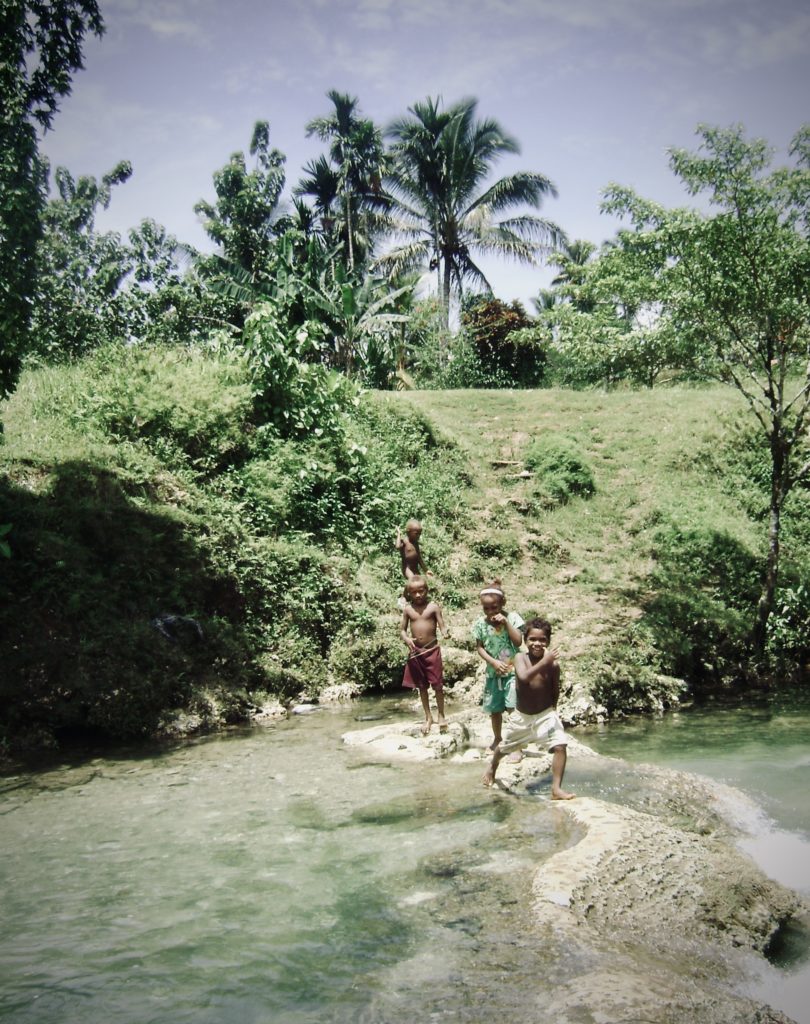



 I’ve been able to help out with English translation in the office at Casa–they want to develop English versions of a number of media documents and I’ve been able to help by editing Google Translations. Besides Casa, I’ve also had the opportunity to lead a worship song in Portuguese/English with a Brazilian girl on Sunday–it was at the small Anglican church that meets on the day center grounds to reach the surrounding community. The picture to the right is with members of the Casa da Esperança team after working a bazaar to raise money for the day care center!
I’ve been able to help out with English translation in the office at Casa–they want to develop English versions of a number of media documents and I’ve been able to help by editing Google Translations. Besides Casa, I’ve also had the opportunity to lead a worship song in Portuguese/English with a Brazilian girl on Sunday–it was at the small Anglican church that meets on the day center grounds to reach the surrounding community. The picture to the right is with members of the Casa da Esperança team after working a bazaar to raise money for the day care center!
